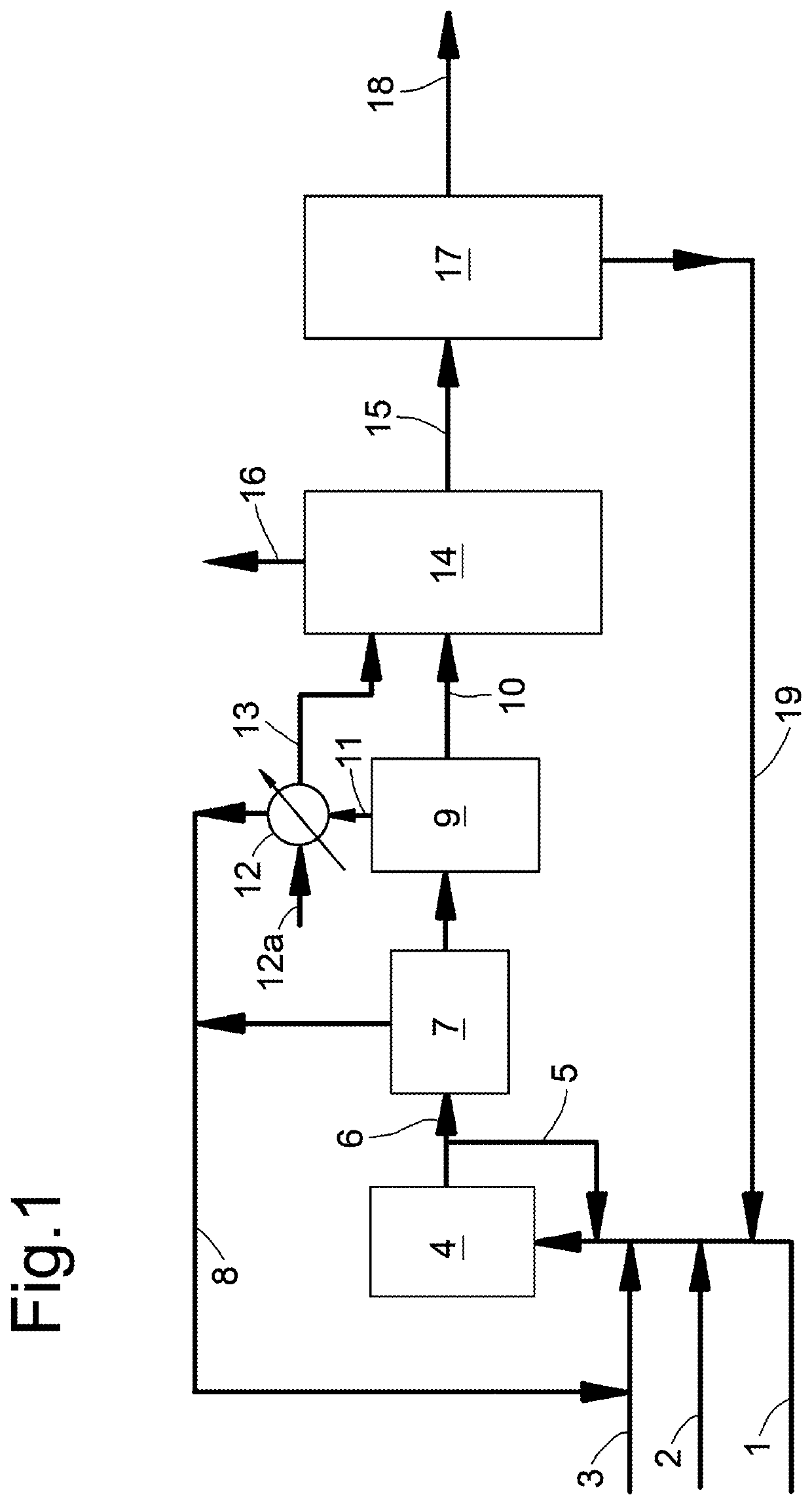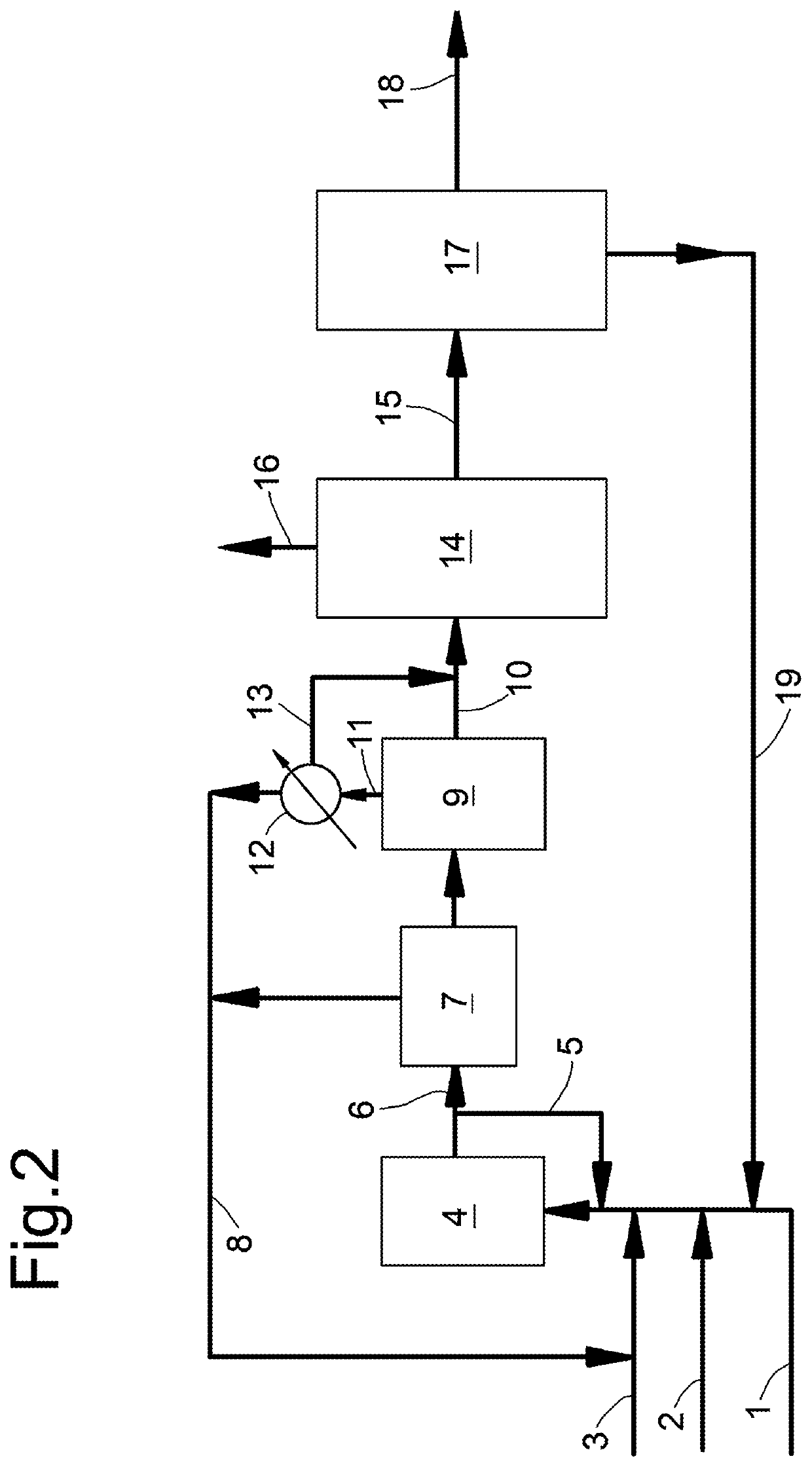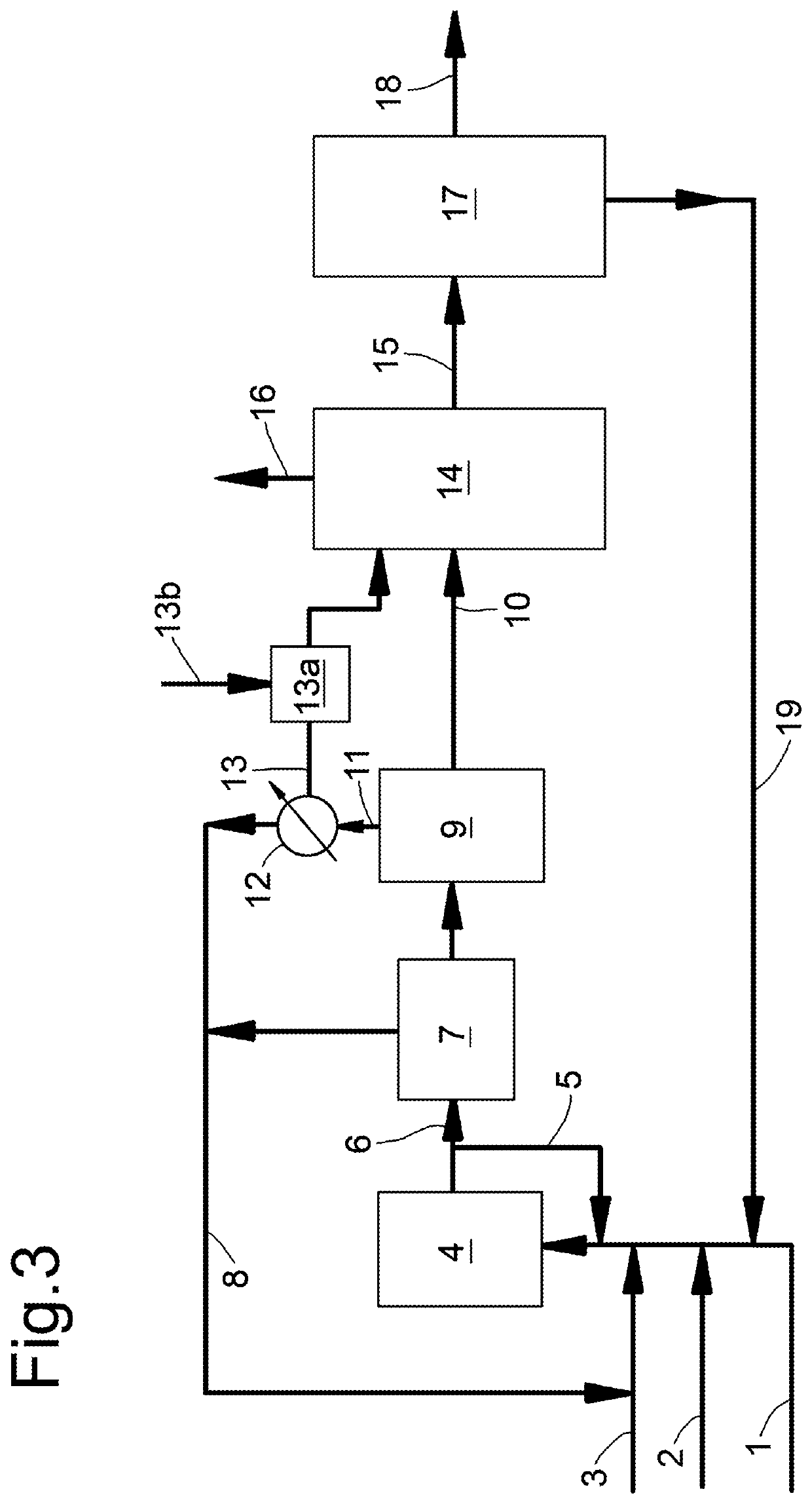Process for the preparation of ethylene glycol
- Summary
- Abstract
- Description
- Claims
- Application Information
AI Technical Summary
Benefits of technology
Problems solved by technology
Method used
Image
Examples
examples
[0097]The following abbreviations are used: MEG=monoethylene glycol; DEG=diethylene glycol; CE=2-chloroethanol (MW=80.51 g / mole); IE=2-iodoethanol (MW=171.97 g / mole); KOH=potassium hydroxide (alkali metal containing basic compound); KCl=potassium chloride; KI=potassium iodide; ppmw=parts per million by weight.
[0098]In the experiment, a hydrolysis reaction product mixture comprising 94.7 wt. % of MEG, 5.0 wt. % of DEG and 39 mmol / kg of KOH was placed in a vessel at ambient temperature. A condensate stream comprising 81.3-83.0 wt. % of water, 14.2-15.9 wt. % of MEG, 2.4 wt. % of ethylene carbonate, 170-300 ppmw of CE and 110-160 ppmw of IE was mixed, by in-line mixing, with a hydrolysis reaction product stream from said vessel. The temperature of both said streams was ambient temperature. The relative amounts of the components in the condensate stream varied over time because different batches of the condensate stream were made for the experiments.
[0099]The resulting mixed stream was ...
PUM
| Property | Measurement | Unit |
|---|---|---|
| Temperature | aaaaa | aaaaa |
| Time | aaaaa | aaaaa |
| Time | aaaaa | aaaaa |
Abstract
Description
Claims
Application Information
 Login to View More
Login to View More - R&D
- Intellectual Property
- Life Sciences
- Materials
- Tech Scout
- Unparalleled Data Quality
- Higher Quality Content
- 60% Fewer Hallucinations
Browse by: Latest US Patents, China's latest patents, Technical Efficacy Thesaurus, Application Domain, Technology Topic, Popular Technical Reports.
© 2025 PatSnap. All rights reserved.Legal|Privacy policy|Modern Slavery Act Transparency Statement|Sitemap|About US| Contact US: help@patsnap.com



